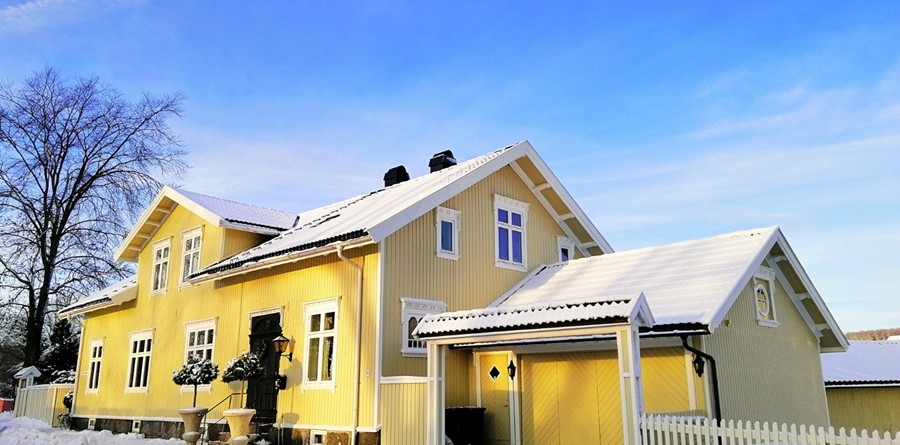10 Steps to Winter Ready Your Home
Even though winter might already be underway, there’s still time to make your living space more comfortable and secure against the cold. Whether you’re in an apartment or a house, these straightforward strategies can help you brace for chilly weather, reduce energy costs, and avoid common issues. Plus, I’ll include some extra tips to enhance your preparations.
Preparing the Inside of Your Home
1. Safeguard Your Plumbing Against Freezing
Cold temperatures can cause water in pipes to expand and potentially crack them. To prevent this, identify and seal any drafts around indoor plumbing fixtures using caulk or insulation. Keep an eye on areas prone to low temperatures, like basements or exterior walls, and use space heaters or fans to circulate warmer air if needed—always following safety guidelines to avoid fire hazards. During extreme cold, let faucets drip slightly to keep water moving.
Extra hint: Install pipe insulation sleeves on exposed lines for added protection, and consider smart home sensors that alert you to temperature drops.
2. Schedule a Heating System Check-Up
Ensure your heating unit is reliable before the deepest freezes arrive. Delaying this can lead to long wait times for service when demand peaks. A professional tune-up can spot issues early, improve efficiency, and extend the system’s lifespan.
Extra hint: Change your air filters monthly during winter to maintain good airflow and indoor air quality, which can also lower your utility bills.
3. Seal Up Doors and Windows
Check for air leaks around entry points to the outdoors by feeling for drafts or using a candle to detect movement. Apply fresh weatherstripping to doors and consider adding plastic film kits to windows for an inexpensive barrier against cold air.
Extra hint: Hang thermal curtains or blinds to trap heat inside, and reverse your ceiling fans to push warm air downward for better room circulation.
4. Maintain Your Heating and Air Systems
Before cranking up the heat, dust off baseboard heaters to eliminate musty smells, and test each unit to confirm they’re functioning. For multi-level homes, prioritize warming lower floors first since heat naturally rises. If you have a ventilation system, clear out built-up debris to avoid circulating particles.
Extra hint: Vacuum vents and registers regularly, and consider adding a humidifier to combat dry winter air, which can prevent static shocks and protect wood furnishings.
5. Test Safety Alarms
Regularly verify that your smoke and carbon monoxide detectors are operational by pressing the test buttons, replacing batteries, and wiping away dust. This quick task can make a big difference in emergency situations.
Extra hint: Install interconnected alarms that alert the whole house if one goes off, and create a family emergency plan including escape routes for winter-specific risks like heating malfunctions.
6. Test for Radon Levels
Radon is a naturally occurring gas that can seep into homes through the ground, posing health risks over time as it’s linked to respiratory issues. Since it’s undetectable without equipment, use a home testing kit to check concentrations, especially in lower levels of your home. If levels are high, consult experts for mitigation.
Extra hint: Seal cracks in your foundation or basement floor as a preventive measure, and retest every few years or after home renovations.
7. Prepare Your Fireplace
If you have a wood-burning or gas fireplace, get it professionally cleaned and inspected to remove creosote buildup and ensure safe operation. This is crucial for preventing chimney fires, and many areas have local rules requiring it.
Extra hint: Stock up on dry firewood or fuel early, and install a spark screen or glass doors to contain embers while maximizing heat output.
Tackling the Outside of Your Home
8. Drain Outdoor Water Lines
Prevent damage from frozen water by shutting off and draining all exterior faucets, hoses, and irrigation systems. Store hoses indoors to avoid cracking.
Extra hint: Use insulated covers on outdoor spigots for extra defense, and disconnect garden hoses from the house to eliminate any trapped water.
9. Examine Roof, Gutters, and Siding
Clear out any lingering debris from gutters to ensure proper drainage and check that they’re securely fastened. Scan your roof for damaged or missing shingles that could lead to leaks during snowmelt. Look over exterior walls for gaps or cracks, and seal them promptly to block moisture entry.
Extra hint: Trim overhanging tree branches that could dump snow or ice onto your roof, and consider adding attic insulation if you notice ice dams forming in past winters.
10. Tidy and Stow Outdoor Items
Wash down patio sets, grills, and other gear with mild soap, let them dry thoroughly, and store them in a shed or garage. For metal parts like grill grates, apply a light oil coating to ward off rust.
Extra hint: Cover items that must stay outside with weatherproof tarps, and prepare a snow removal kit with shovels, salt, and sand to keep walkways safe and accessible.











